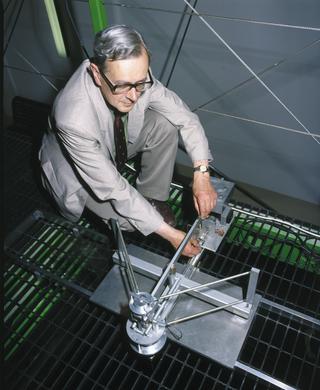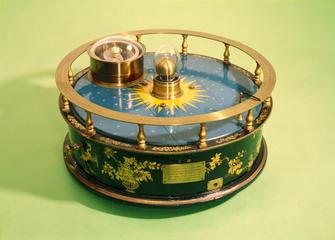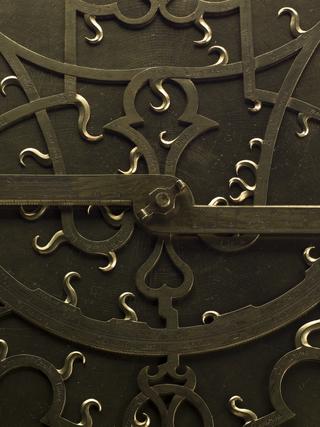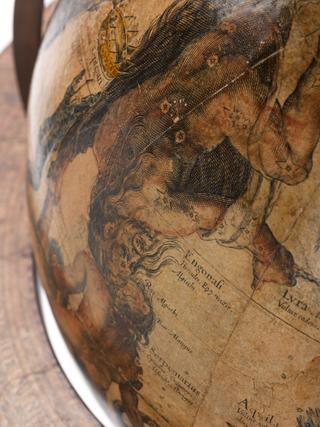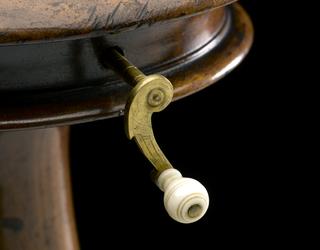
Artificial mercury horizon with case.
- maker:
- Cary and Porter Limited

Artificial mercury horizon in fitted leather case invented by Captain Christopher George, provisionally patented in 1868 (No.2624) and made by Cary & Porter Limited, London, England, 1895-1900. Consists of two black-lacquered steel mercury holders on three levelling feet, interconnected by a tube fitted with a stopcock. One is a storage reservoir with a valve to admit air and empty the mercury into the other, which is used for making observations and is fitted with a glass cover. Markings indicate it was supplied by the Hydrographic Office of the British Admiralty to the British Antarctic Expedition of 1901-1904 (Discovery Expedition).
